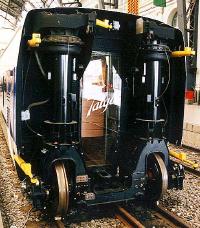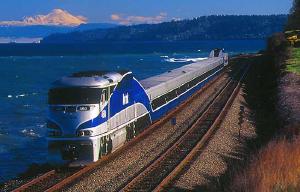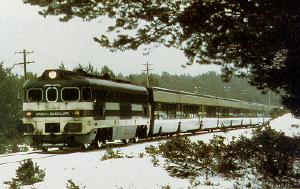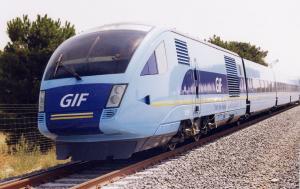Trains for the curvature of the Shasta Route -
adapting to regulations in a less than perfect world
In general, location-based active tilting is superior to "natural", gravity-controlled tilting. The users of "natural"
tilting in Japan have replaced these trains with faster ones, that use a location database and active control.
Not all gravity-controlled tilting is created equal, though. The Japanese versions use a carbody, that rolls on the bogies.
This results in more resistance than given by the Talgo system, which tilts in its air suspension bellows under the roof.
This quite unusual location for a suspension makes it tilt faster and smoother than other passive systems.
This tilting system will not react as fast as a location-based active system, but is expected to work rather well with the
tight curvature of the Shasta Route nonetheless - much better than a sensor-based active system. Gravity is less easy to fool
than a computer with sensors.
It needs to be added, however, that Talgos are not usable for this route without a modification: Normally, their tilting
system is switched off at 43.5 mph, in order to avoid excessive sway in station throats. This "feature" needs to be replaced
by something better, in order to avoid cutting out the tilting system in the tightest curvature.
When writing "Talgo", the author does not mean "Cascades Talgo". The locos for Amtrak's Cascades service are not usable for the Shasta Route. They are far too heavy for their power, and their center of gravity is too high. This does not come as a surprise, since the Amtrak F59 PHI are little more than freight engines with HEP, plus some composite added for streamlining and cosmetics. A comparison to Spanish Talgos with purpose-built engines shows the deficiencies:



